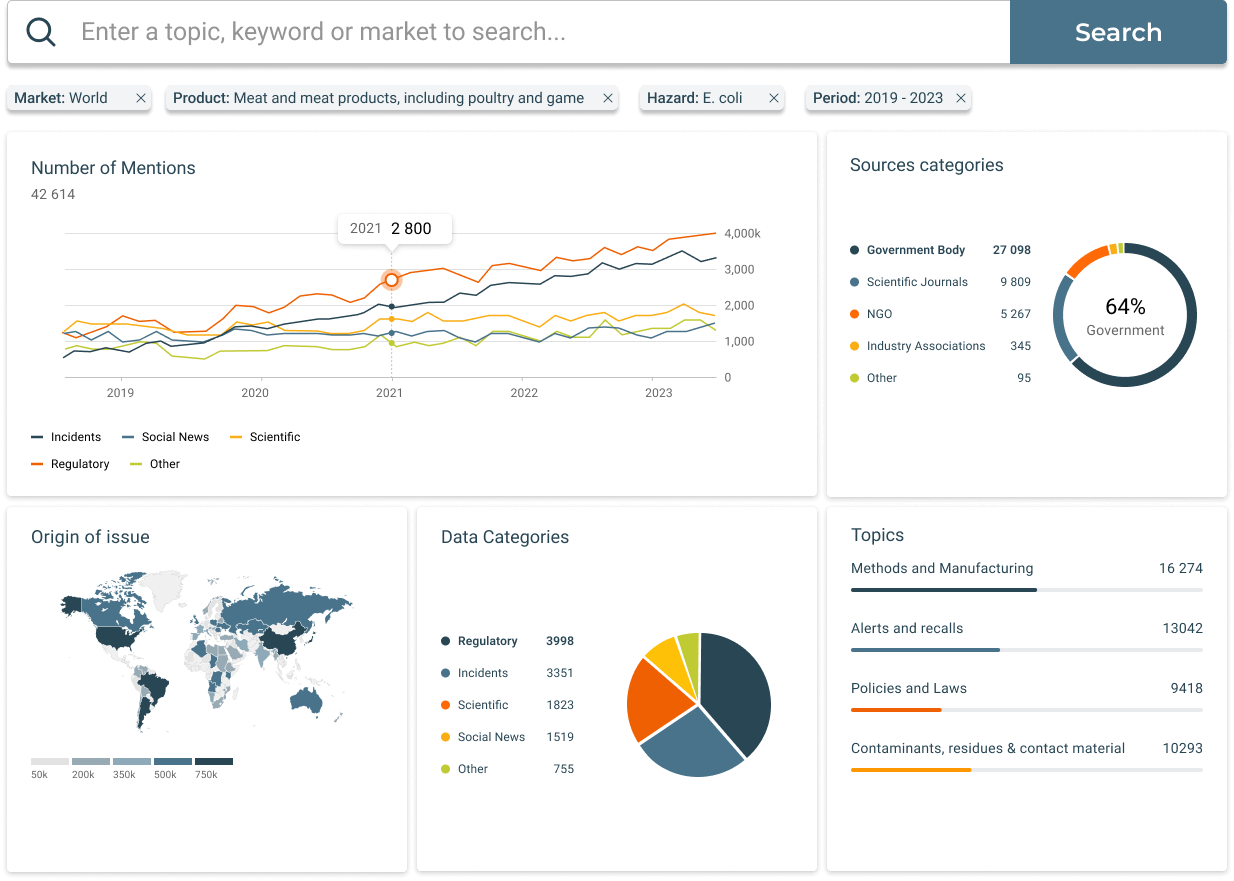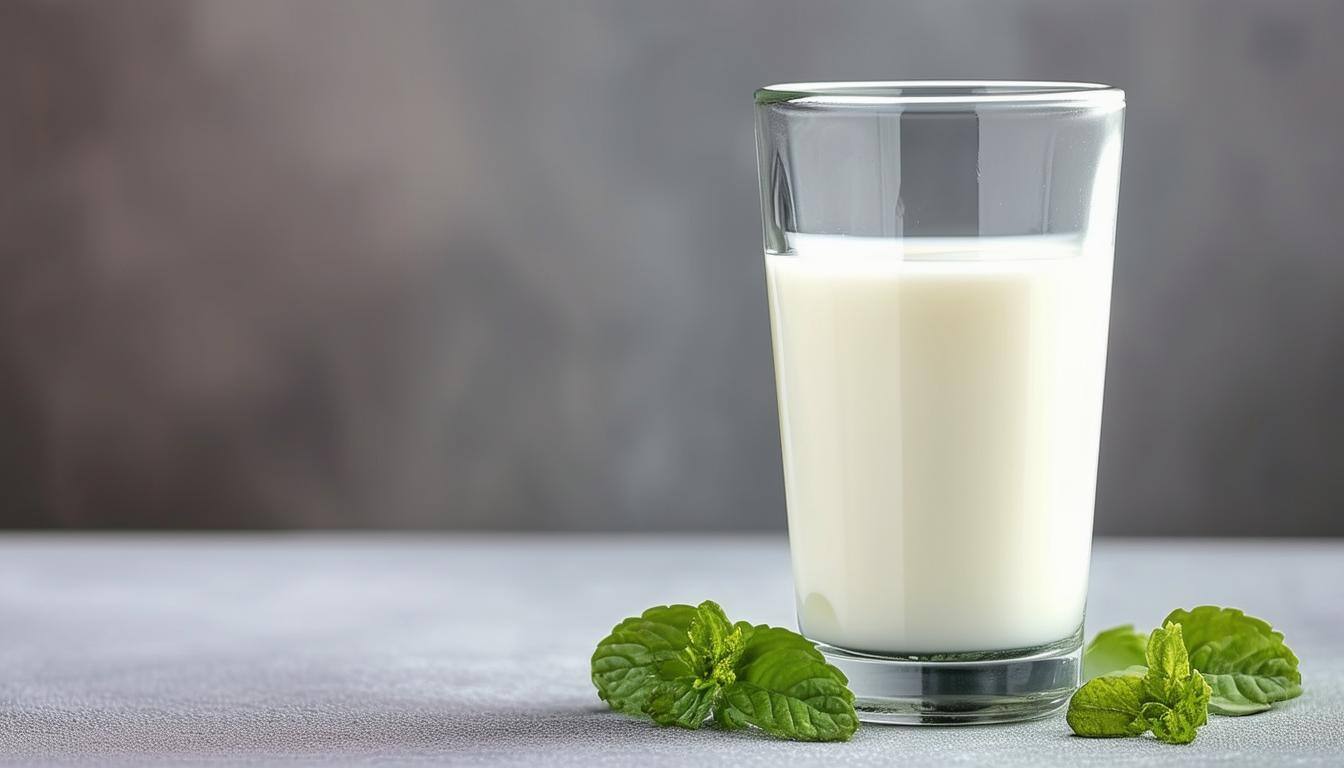Milk is a staple in households worldwide and serves as a critical ingredient in many foods and beverages. Due to its perishable nature and specific handling requirements, milk is susceptible to contamination and quality issues that can lead to recalls. Milk recalls are typically initiated in response to contamination with pathogens, such as Salmonella, Listeria monocytogenes, and E. coli, or due to other safety concerns, like allergen mislabeling or foreign materials. This guide offers an in-depth look at the causes of milk recalls, the regulatory role in managing these recalls, the impact on the industry, and preventive measures to ensure the safety and quality of milk products. Let's dive into this type of Food Recall.
What is a Milk Recall?
A milk recall is the urgent removal of milk products from the market when they pose health risks to consumers. Recalls may be initiated voluntarily by dairy producers or mandated by regulatory agencies, such as the U.S. Food and Drug Administration (FDA) or the Centers for Disease Control and Prevention (CDC). The primary goal of a milk recall is to protect consumers from potential harm, whether from contamination, mislabeling, or other quality control issues.
Milk recalls can affect various types of milk products, including whole milk, skim milk, lactose-free milk, and even milk-based products like cream and yogurt. Given the widespread consumption of milk, recalls are managed with urgency to prevent illness, especially among vulnerable populations like infants, the elderly, and individuals with compromised immune systems.
Main Causes and Hazards of Milk Recalls
Milk recalls are usually triggered by one or more of the following safety hazards, each of which can pose serious risks to consumers:
-
Microbial Contamination (e.g., Salmonella, Listeria, E. coli): Milk contamination with harmful bacteria is one of the leading causes of recalls. Bacteria such as Listeria monocytogenes, Salmonella, and E. coli can be introduced during the milking, processing, or packaging stages, often due to inadequate sanitation or cross-contamination. These pathogens can cause severe gastrointestinal illnesses, with symptoms ranging from nausea and fever to kidney failure or even death in extreme cases.
-
Allergen Mislabeling: Milk and milk-based products are common allergens. Mislabeling that fails to properly declare the presence of milk can pose severe risks for individuals with milk allergies, leading to serious allergic reactions. Recalls may be issued if cross-contamination with other allergens occurs, such as soy or nuts, in facilities that process multiple products.
-
Foreign Material Contamination: Foreign materials, like plastic fragments, metal shards, or glass pieces, can occasionally end up in milk products due to equipment malfunctions or packaging errors. These contaminants pose physical hazards, with risks of choking or internal injuries for consumers.
-
Improper Pasteurization or Quality Control: Inadequate pasteurization processes can lead to the survival of harmful bacteria in milk. Quality control issues, such as improper temperature management or packaging errors, may also necessitate a recall to ensure the product meets regulatory standards and consumer expectations.
Each of these causes underscores the importance of strict quality control and adherence to food safety standards at every stage of milk production and distribution.
Regulatory Authorities' Role in Milk Recalls
The FDA plays a central role in overseeing milk recalls in the United States, with the CDC often involved in investigating foodborne illness outbreaks linked to milk. Key responsibilities of regulatory authorities in milk recalls include:
-
Inspection and Surveillance: The FDA conducts regular inspections of dairy farms, processing facilities, and distribution channels to ensure that milk production meets regulatory safety standards. These inspections focus on hygiene, equipment maintenance, and compliance with pasteurization requirements.
-
Testing and Surveillance: Routine testing for pathogens and contaminants helps detect contamination before products reach consumers. The FDA monitors milk products for harmful bacteria, chemical residues, and allergens, taking prompt action if contamination is found.
-
Recall Classification and Management: When a milk recall is necessary, the FDA classifies it based on risk:
- Class I Recall: High risk, involving products that could cause serious health issues or death, such as milk contaminated with Listeria.
- Class II Recall: Moderate risk, where the product may cause temporary health problems but is unlikely to lead to severe illness.
- Class III Recall: Low risk, involving products that violate regulatory standards but do not pose immediate health threats.
-
Public Communication and Alerts: Regulatory authorities issue public notices for Class I and II recalls, informing consumers of affected products, lot numbers, and health risks. These alerts are shared through press releases, websites, and social media to reach as many consumers as possible.
-
Post-Recall Assessment and Corrective Actions: After a recall, the FDA may require producers to implement corrective actions, such as revising pasteurization protocols, improving sanitation practices, or enhancing labeling accuracy. These measures are aimed at preventing future incidents and ensuring that safety standards are consistently upheld.
The involvement of regulatory authorities ensures that milk recalls are handled transparently and effectively, safeguarding public health and maintaining trust in dairy products.
Impact of Milk Recalls on the Industry
Milk recalls can have significant repercussions for producers, distributors, and retailers, affecting various aspects of business:
-
Financial Losses: Recalls lead to direct costs associated with product retrieval, testing, and implementing corrective actions. Additional costs may include lost sales, reduced demand, and potential legal liabilities if consumers are affected by contaminated or mislabeled milk products.
-
Reputation Damage: A milk recall, particularly one involving pathogens like Listeria or Salmonella, can severely damage a brand's reputation. Consumers may become wary of the brand, leading to decreased loyalty and a need for public relations efforts to rebuild trust.
-
Increased Regulatory Scrutiny: Following a recall, companies often face closer monitoring from regulatory authorities, including more frequent inspections and additional compliance requirements. This increased scrutiny may strain resources and impact business operations.
-
Supply Chain Disruption: Milk recalls disrupt the entire dairy supply chain, affecting farmers, processors, distributors, and retailers. Managing these disruptions requires effective coordination to remove affected products and restore normal operations.
Understanding these impacts underscores the importance of implementing preventive measures to minimize risks and ensure the safety of milk products.
Preventive Measures for Milk Recalls
To reduce the likelihood of milk recalls, dairy producers should focus on rigorous quality control and safety practices at every stage of production. Key preventive measures include:
-
Good Manufacturing Practices (GMP): Following GMP standards ensures that dairy facilities maintain high levels of cleanliness, equipment maintenance, and hygiene practices, reducing contamination risks during milking, processing, and packaging.
-
Hazard Analysis and Critical Control Points (HACCP) Implementation: A HACCP plan is essential for identifying potential hazards and establishing controls to prevent contamination. This includes monitoring critical points, such as pasteurization temperature and sanitation protocols.
-
Supplier Verification and Testing: Working with trusted suppliers and conducting regular testing of raw milk and other ingredients ensures they meet safety standards, minimizing contamination risks from the source.
-
Routine Microbial Testing: Regular testing for pathogens, such as Salmonella, E. coli, and Listeria, at various stages of production helps detect and address contamination early. This testing, coupled with batch tracking, enables a swift response in the event of a potential recall.
-
Label Verification and Allergen Control: Properly managing allergen labeling and ensuring accurate information on milk products helps prevent mislabeling-related recalls. This is particularly important for products that may come into contact with allergens during processing.
-
Employee Training on Food Safety: Training employees in food safety protocols, including hygiene, handling, and sanitation practices, reduces contamination risks and ensures consistent adherence to safety standards.
By incorporating these preventive measures, dairy producers can minimize the risk of recalls, protect consumer health, and maintain regulatory compliance.
Conclusion
Milk recalls play a crucial role in protecting public health, as they address safety risks posed by contamination, allergens, and quality control issues. Understanding the primary causes of milk recalls, from microbial hazards to mislabeling, allows dairy industry professionals to implement proactive safety measures and adhere to FDA regulations.
For dairy producers, the key to successful recall management lies in prevention. By maintaining high standards of sanitation, implementing HACCP protocols, and regularly testing for contaminants, companies can reduce the risk of recalls and ensure the safety of their milk products. Transparent communication with regulatory authorities and the public further strengthens consumer confidence and protects brand reputation.
Last Month's Food Recalls and Safety Incidents
Explore the latest food recalls, market withdrawals, and safety alerts in our free Food Safety Incidents Dashboard. Updated monthly and powered by SGS Digicomply, this dashboard provides a clear, filterable list of last month’s global food recalls and incidents, allowing you to stay informed on the products and hazards affecting the industry.

How manufacturers and companies can track and utilize global recall data:
SGS Digicomply continuously monitors and analyzes millions of data sources across over 160 jurisdictions. With easy-to-use filters for sources, locations, products, substances, hazards, and more, our platform allows manufacturers to track recall trends and gain actionable insights powered by AI-Copilot.
Explore our interactive demos to see these tools in action.

By combining diverse data sources, SGS Digicomply offers the most comprehensive and targeted screening of food safety data, contextualized with real-time lab data to identify emerging risks.





.webp?width=1644&height=1254&name=Food%20Safety%20Dashboard%201%20(1).webp)
